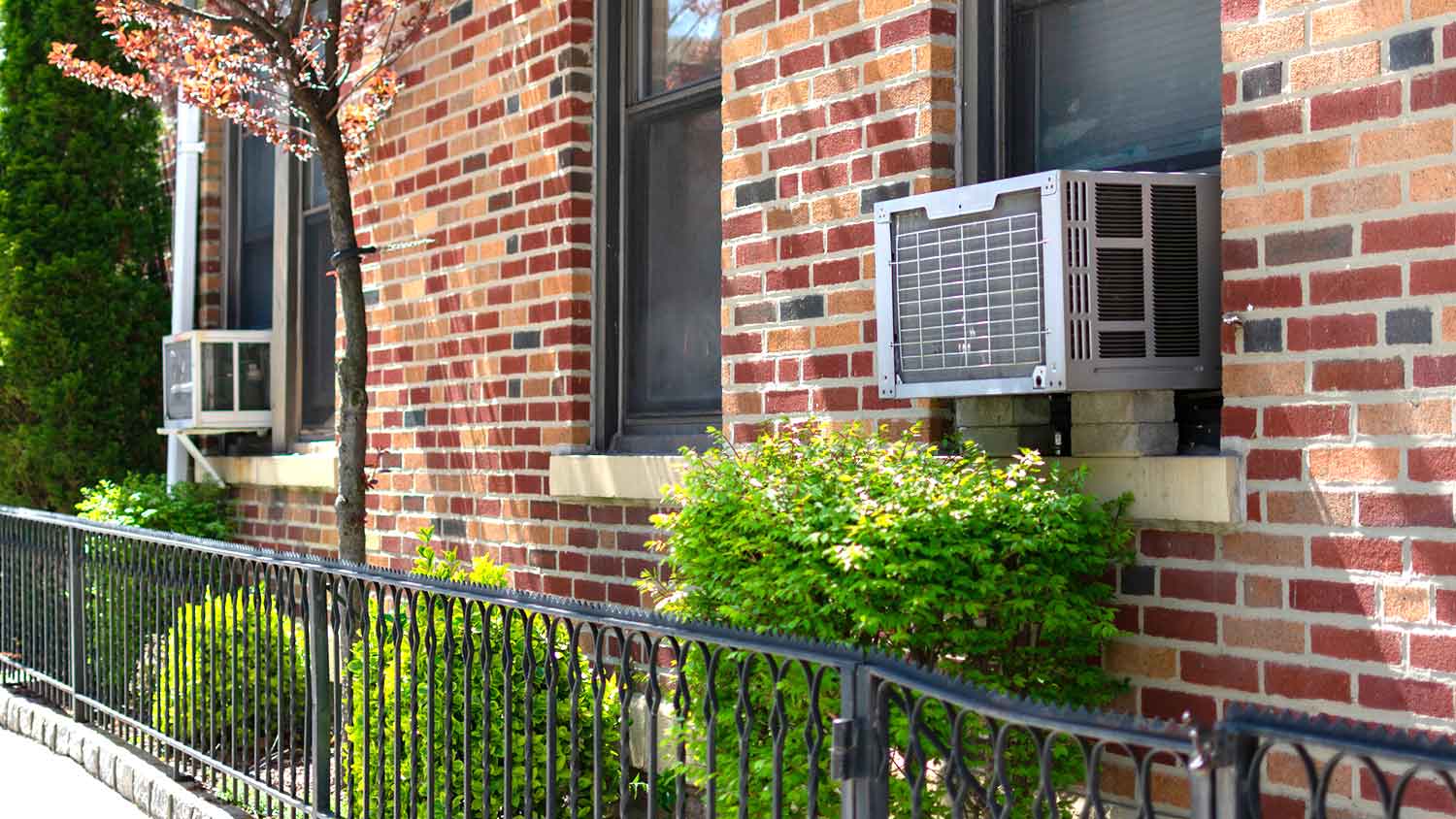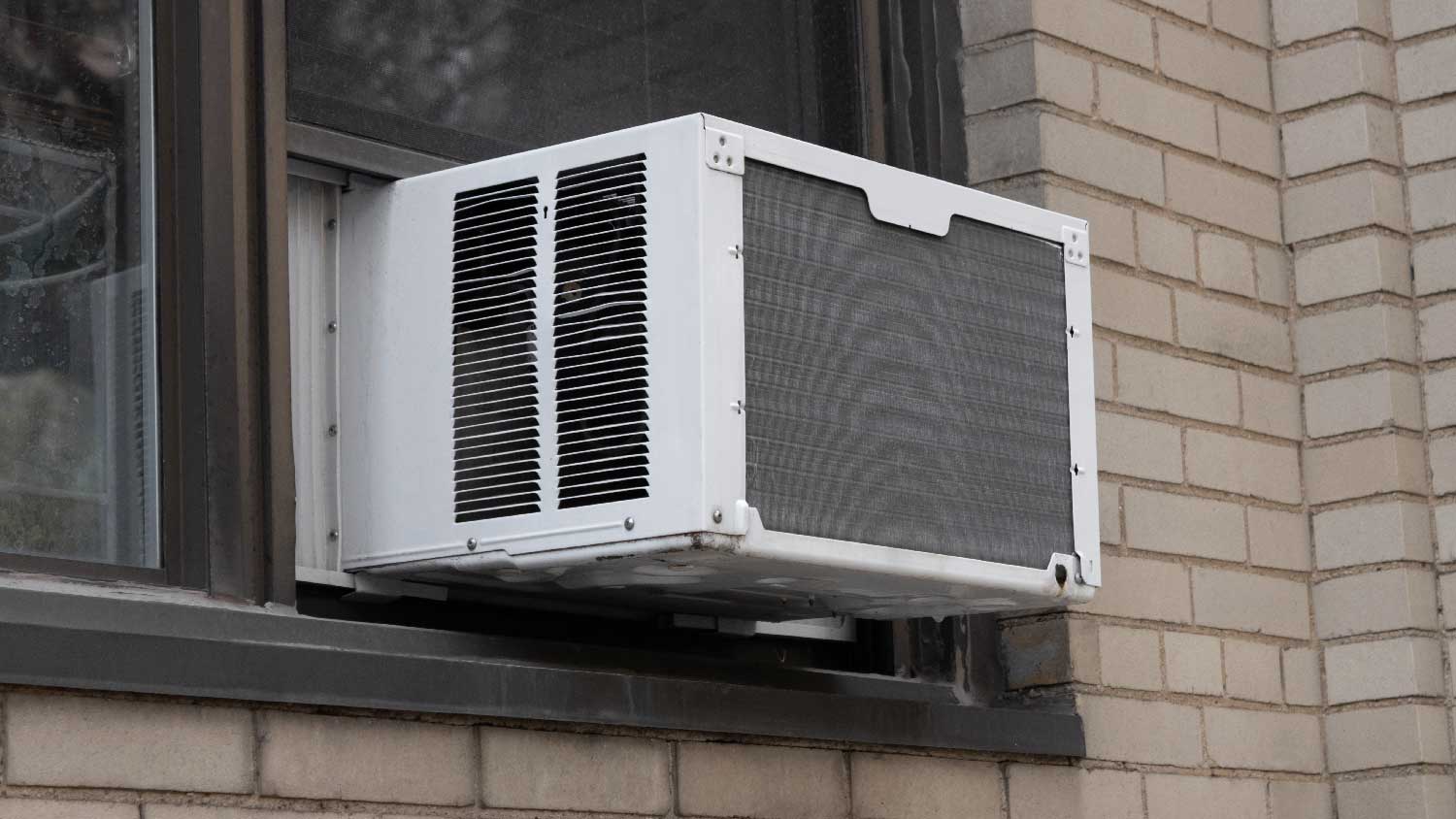
Need fascia and soffit repairs? Hiring a pro ensures proper installation, protects against pests, and prevents structural damage. Learn about common warning signs, material options, and how fascia and soffits safeguard your home from moisture.
The average washer and dryer hookup relocation costs $1,200
On average, the cost to move washer and dryer hookups is between $850 and $1,800, with most homeowners paying an average of $1,200.
The project price increases with distance from existing plumbing and electrical connections.
Professional installation ensures proper drainage, electrical safety, and code compliance.
Convenient laundry placement enhances home functionality and may increase property value.
This article was created using automation technology and thoroughly fact-checked and edited by HomeAdvisor Editor Ryan Noonan.
The cost to move washer and dryer hookups depends on several factors, including project scope, distance from existing utilities, and necessary modifications. On average, most homeowners spend between $850 and $1,800 for this project, with the national average sitting at $1,200. Basic relocations might cost as little as $500, while extensive projects requiring significant structural changes can reach $5,000 or more.
Moving laundry appliance connections involves several components that contribute to the total expense. Understanding these individual costs helps create a realistic budget for your project.
| Component | Average Cost Range | Key Factors |
|---|---|---|
| New drain line | $360–$1,840 | Distance, pipe condition, proper slope |
| New electrical outlets | $100–$500 | Amperage needs, GFCI, code compliance |
| Gas line | $200–$5,000 | Leak testing, shut-off valves, pro install required |
| Ventilation | $100–$1,000 | Proper dryer vent route, moisture management, fire safety |
| Drywall/finishing | $300–$1,000 | Wall or ceiling repair, painting, trim work |
| Appliance installation | $50–$175 per unit | Lifting, leveling, hooking up water or gas lines |
Relocating your washer requires proper water supply and drainage connections. A new drain line costs between $360 and $1,840, depending on complexity and distance. Adding cut-off valves, which are essential for controlling water flow, will add $10 to $30 per line. Proper slope in the drain line is crucial for preventing water backup and potential damage.
Your laundry setup needs appropriate electrical connections. Washers require standard outlets, while dryers need higher-voltage connections. Installing new outlets costs between $100–$500 per outlet, depending on your home's electrical system. Older homes might need electrical panel upgrades to handle the additional load safely.
If you're using a gas dryer, you'll need proper gas line connections. This can cost between $200 to $5,000 depending on the distance from existing gas lines and complexity of installation. Gas line work always requires professional installation to ensure safety and compliance with local codes.
Proper venting for your dryer prevents moisture buildup and reduces fire hazards. A new dryer vent installation ranges from $100 to $1,000 depending on length and routing complexity. After installation, expect to spend $300 to $1,000 on drywall repairs to restore walls and ceilings affected by the project.
The complexity and location of your relocation significantly impact the overall cost. Different project types come with their own challenges and price points.
The most economical option is relocating within the same room, starting at $500. This involves minor plumbing extensions and possibly new electrical outlets. The work often completes within one or two days since existing utilities are nearby.
Moving your laundry setup to another room on the same floor costs between $1,000 and $1,500. This involves longer runs of plumbing and electrical connections, plus potential wall modifications. The project takes two to three days, depending on wall accessibility and existing utility locations.
Relocating to a basement or garage costs between $1,060 and $4,475, while moving laundry facilities upstairs can reach $15,000 due to gravity drainage challenges and structural considerations. Multi-floor relocations require strategic planning for water supply and drainage, often necessitating pumps for upward water movement or special drainage solutions.
Professional installation ensures your laundry hookups meet safety standards and building codes. Different specialists handle various aspects of the relocation process.
Plumbers handle water supply lines, drainage connections, and shut-off valve installation. Their expertise ensures proper water pressure and leak-free connections.
Electricians install appropriate outlets and ensure your electrical system can handle laundry appliances safely. They'll install dedicated circuits and GFCI protection in moisture-prone areas. Professional electrical work prevents hazards and ensures your system meets current codes.
For complex relocations, especially those involving multiple floors or significant structural changes, a general contractor can coordinate the entire project. They manage multiple trades, handle permits, and ensure quality work throughout the process. Their oversight becomes particularly valuable for challenging installations.
Accessing existing plumbing and electrical systems often requires removing drywall, flooring, or cabinetry. The extent of demolition needed depends on your home's construction and the new location's accessibility. Older homes might reveal unexpected issues once walls are opened.
Most municipalities require permits for plumbing and electrical modifications. Permit fees range from $50 to $50, depending on your location and project scope. Skipping permits can lead to complications when selling your home or if problems arise later.
Space constraints, flooring repairs, and special ventilation requirements can add to your project cost. Installations in tight spaces like closets or cramped basements may require additional labor time. Ensuring proper ventilation is crucial, especially for gas dryers or enclosed spaces where moisture could become problematic.
Consider these cost-saving strategies to make moving your washer and dryer hookups more budget-friendly:
Request quotes from multiple local plumbers and electricians near you to compare pricing and services.
Position your new laundry location near existing plumbing stacks and electrical panels when possible.
Schedule your relocation during other renovation work to share demolition and finishing costs.
Handle simple preparation tasks yourself, such as clearing the work area or removing cabinets.
Source your own quality fixtures like hoses and valves to avoid contractor markups.
Consider reusing existing components like dryer vents or electrical boxes if they're in good condition.
Create detailed plans before starting to prevent costly mid-project changes.
While some aspects of washer and dryer relocation might seem DIY-friendly, most components require professional expertise for safety and reliability.
Homeowners can handle preparation tasks like clearing the area, removing shelving, or painting after installation. Some may feel comfortable connecting appliance hoses or installing simple vent covers. These tasks can reduce labor costs without compromising the technical aspects of the installation.
Water supply connections, drain line installation, electrical work, and gas line installation should always be handled by licensed professionals. Improper installations can lead to water damage, electrical hazards, or gas leaks. Structural modifications also require professional guidance to maintain your home's integrity.
While DIY might seem less expensive initially, professional installation provides peace of mind and often includes warranties. Appliance installation costs $50 to $175 per unit when handled by professionals. The cost of fixing DIY mistakes often exceeds what you would have paid for professional installation initially.
No place is more important than your home, which is why HomeAdvisor connects homeowners with local pros to transform their houses into homes they love. To help homeowners prepare for their next project, HomeAdvisor provides readers with accurate cost data and follows strict editorial guidelines. After a project is complete, we survey real customers about the costs to develop the pricing data you see, so you can make the best decisions for you and your home. We pair this data with research from reputable sources, including the U.S. Bureau of Labor Statistics, academic journals, market studies, and interviews with industry experts—all to ensure our prices reflect real-world projects.
From average costs to expert advice, get all the answers you need to get your job done.

Need fascia and soffit repairs? Hiring a pro ensures proper installation, protects against pests, and prevents structural damage. Learn about common warning signs, material options, and how fascia and soffits safeguard your home from moisture.

Who installs window AC units? Learn why HVAC technicians are the pros to call, when handypeople fit, and how pros complete safe installations

Wondering who fixes window AC units? Learn whether to call an AC repair company or an appliance repair pro, plus how repairs get done.

Unsure who to hire to test for lead paint? Learn whether to call a lead testing specialist or contractor and what to expect.

Learn how to find and hire a handyman you can count on with this handy guide.

Learn how to find and hire painters, plus 10 questions you should always ask before choosing a pro.